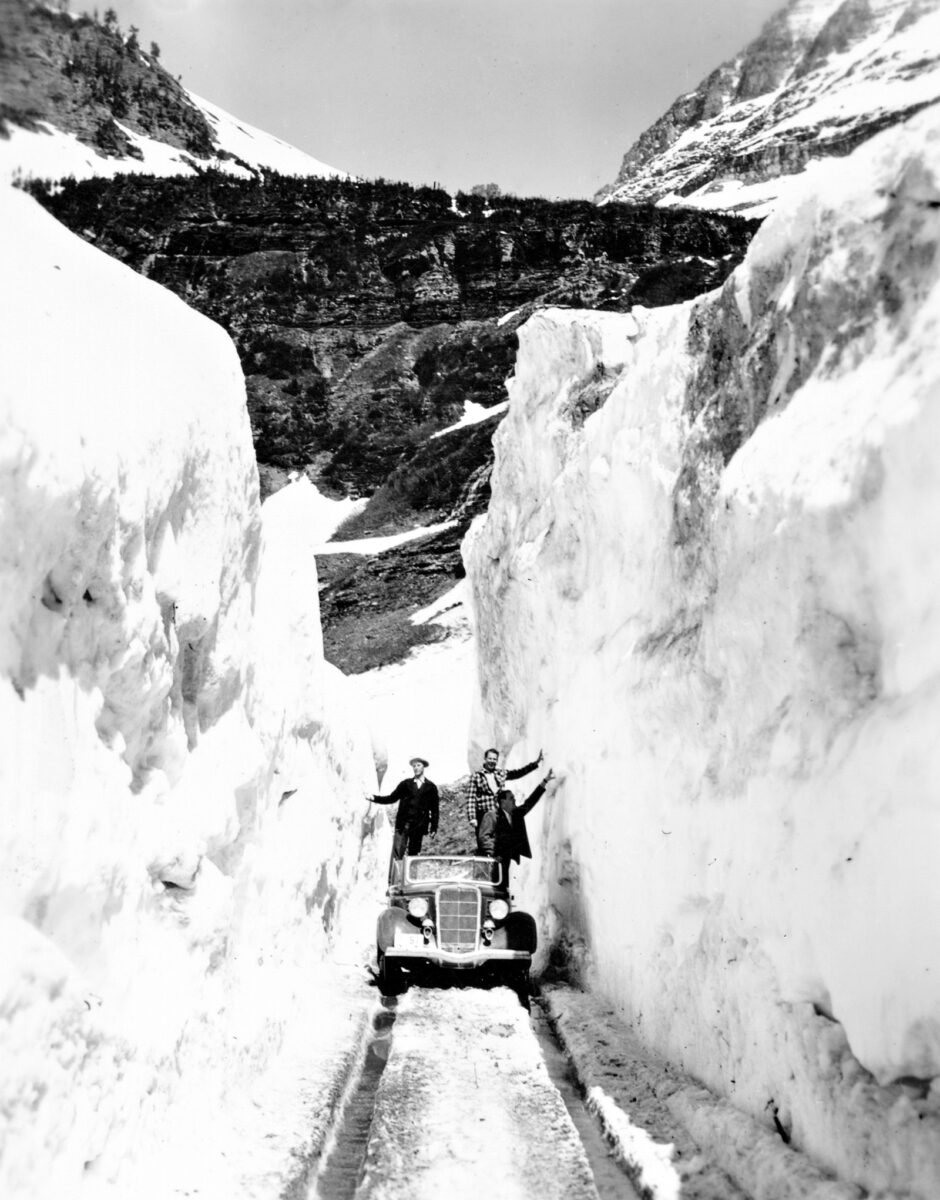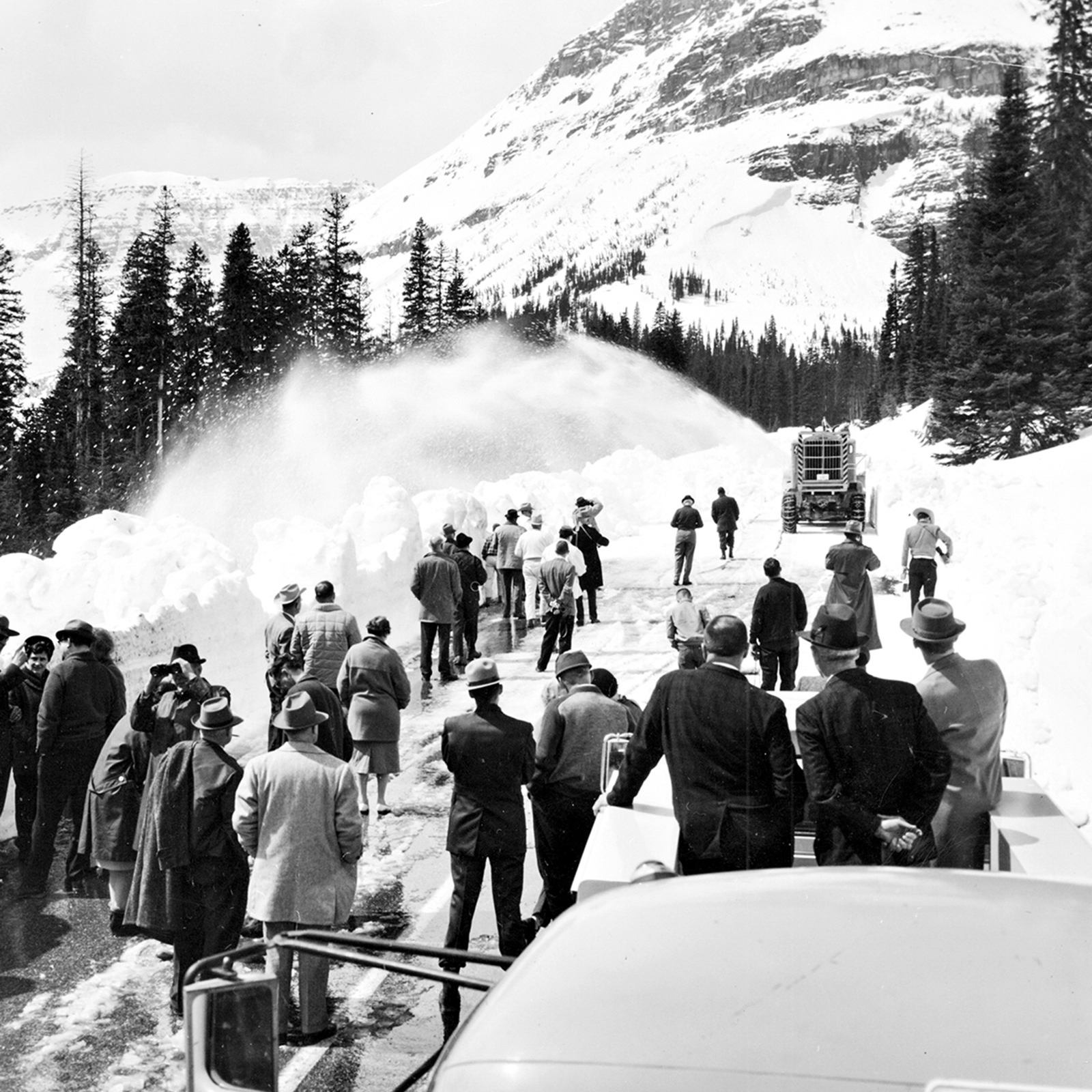On the morning of May 2, 1911, Frank Whalen, Frank D. Stoop and T.J. Koenig drove from their home in Kalispell to Glacier National Park. Today, that seemingly simple feat takes about 45 minutes — depending on traffic, of course — but in 1911, it took wheelman Whalen an excruciating nine hours to cover the 40 or so miles between the county seat and the west entrance. While U.S. Highway 2 between these two points is now four lanes in some spots, back then the road to Glacier wasn’t much wider than a goat trail. In fact, the “road” didn’t even extend all the way to West Glacier (known simply as Belton back then); once the trio reached Lake Five near Coram, they had to drive alongside the Great Northern Railway tracks to traverse the final few miles to the park.
A few months later, the Kalispell Journal described the drive as such: “Impassable mudholes, staggering sidehills, breath-taking declivities and gorges, banks of snow, stumps and fallen trees, with nothing but the old ‘tote’ trail to mark the desperate route. But just as purple shadows began to chase the sun tints up the glistening peaks the weary trio emerged from the forest and crept down the erratic trail into Belton, having covered nearly 40 miles in nine hours without having ‘busted’ even so much as a tire.”
When the trio arrived in West Glacier, they not only celebrated surviving that bumpy ride from Kalispell, but they had also secured themselves an admittedly obscure spot in northwest Montana history. Whalen, who worked for Stoop as a mechanic at his garage in Kalispell, had become the first person to drive an automobile to Glacier National Park. Today, unless there’s traffic or a “bear jam,” the excursion is an unremarkable commute for Flathead Valley residents. In 1911, however, it was described by the local newspaper as “an epoch-making event.”
The rough-and-tumble ride was exemplary of what it was like to drive to and around Glacier Park in the years immediately following its creation as a national park in 1910. But that would soon change during a remarkable 20-year period, starting with the arrival of a national auto tour in 1913, which helped plant the seed of the great American road trip in the nation’s collective psyche, and culminating in 1933 with the opening of the Going-to-the-Sun Highway. It was a period that would alter the park forever, transforming it from a place that could only be explored on horseback or your own two feet, into one that could be taken in through a windshield in the comfort of your own private automobile — for better or worse.
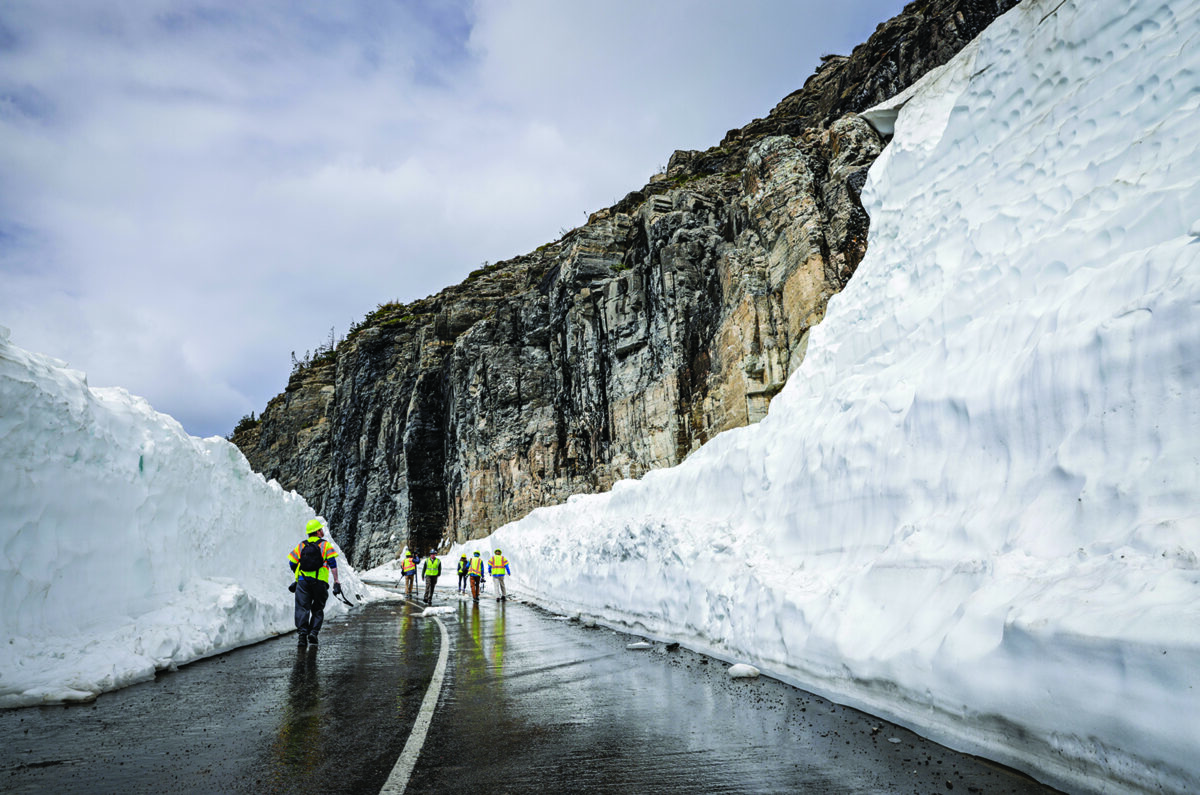
When President William Howard Taft signed the legislation creating Glacier National Park on May 11, 1910, there were few if any roads leading to, in or around the park. In fact, the word “road” might be a bit too generous for the primitive infrastructure available. At the time, there was a road from the train station in West Glacier to the foot of Lake McDonald that had been constructed in 1895 (although for the first two years of its existence, there was no bridge across the Middle Fork of the Flathead River, so people had to use a rowboat midway through their journey). There were also a handful of roads that had been built about a decade earlier to support mining activities, including one connecting Lake McDonald to the foot of Lower Kintla Lake (following the route of today’s Inside North Fork Road). On the east side, there were a few primitive roads from Browning to Lake Sherburne and St. Mary.
Government officials knew immediately that road construction in and around the park had to be one of their top priorities. In fact, Glacier Park’s first leader, William R. Logan, wasn’t even bestowed with the title of “park superintendent,” as is the case today, but rather “superintendent of road and trail construction.” Indeed, Logan’s knack for road construction was clear when his obituary two years later in the Anaconda Standard was published with the annotation, “Was A Noted Road Builder.”
With 1 million acres under his purview, Logan knew early on that it would be challenging to manage the new park without roads, especially one that crossed the Continental Divide and connected the east and west sides. To do that, Congress earmarked $15,000 in 1910 to build roads and trails. But little was accomplished that first year as Logan, who arrived in Glacier three months after Taft signed the legislation creating it, was preoccupied with fighting wildfires that first summer and fall. The following year, however, Logan and his crews were able to get to work improving the road between Belton and Apgar and extending it toward Fish Creek.
While the federal government occupied itself with building roads and trails on the west side, the east side of the park was left mostly untouched by the Park Service. Filling in that void was the Great Northern Railway, which had constructed its main line to the Pacific Northwest over Marias Pass less than 20 years earlier. Railroad President Louis W. Hill (son of legendary “Empire Builder” James J. Hill) had taken a personal interest in the creation of Glacier Park a few years earlier and, according to legend, had helped twist arms in Congress to secure the votes needed to create it. Hill knew that having a national park along his main line would help generate ridership for the GN’s passenger trains, so the railroad threw everything it had at the park. During the first few years of the park’s existence, the railway built a series of hotels and chalets in and around it. It also spent liberally in a marketing campaign to promote the park, describing it as the “American Alps” and encouraging people to “See America First.”
The GN’s plan was to have guests detrain in East Glacier Park and then spend a night or two at its gateway hotel, the 155-room Glacier Park Lodge, before continuing on to the chalets situated in the park’s interior, or at the Many Glacier Hotel in the Many Glacier Valley. But to connect that system, the park needed better trails and roads. So, the railroad took it upon itself to build roads, some outside of the park boundaries and some within, including the road between Divide Creek and Upper St. Mary Lake. In some instances, the railroad was reimbursed for the roads and trails it constructed. But even then, the railroad often spent more than the government. For example, the road between East Glacier Park and the St. Mary Chalet cost $90,900, of which the railroad paid $68,000.
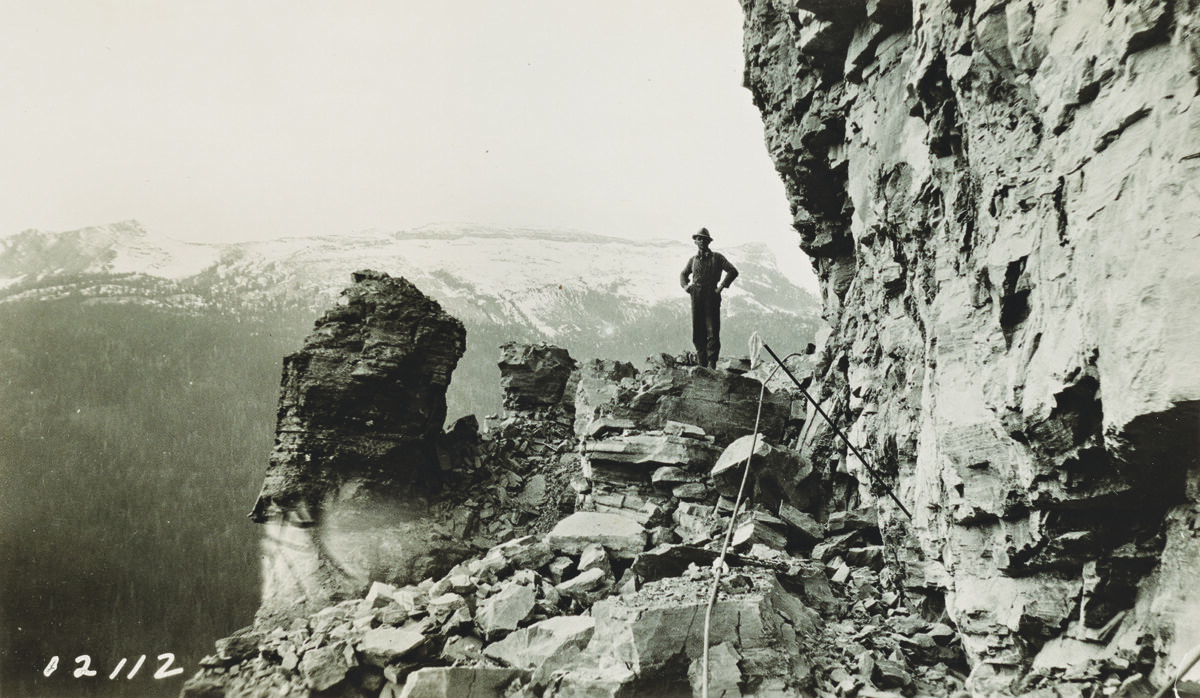
At the time, however, there were very few private automobiles plying those roads. Most of the time they were used by stagecoaches, specifically those operated by brothers Bill and and George Brewster, who also operated coaches in Banff, Alberta. Hill had hired them to run trips between East Glacier Park and Many Glacier (with an overnight stay at St. Mary in between). But the stagecoaches had trouble staying on schedule, especially when wet weather turned roads into muck. In one instance, Hill and his family had to trudge through the mud and rain because there was no coach available to pick them up and take them to the hotel. It was with that experience in mind that when Hill was approached by Walter White, vice president of the White Motor Co., about having motor vehicles operate in the park, he jumped at the chance. In 1914, the Brewster brothers received a one-year contract to continue operating the stagecoaches, but there was a new clause in it: the railroad could provide automobile service to any point in the park. In the spring of 1914, the first buses arrived in East Glacier Park. Almost immediately, it was found that the buses were more reliable than the stagecoaches and within a year, the Brewsters and their horses were out of work.
As time went on, the park began to realize that it needed to put rules in place for when people did bring private automobiles into the park, and in March 1912, it did just that. The regulations required all drivers to apply for a $1 permit to make a single round trip into the park or $5 for an entire year. (Adjusted for inflation, the round-trip permit would cost just over $30 in 2023, about $5 short of the current seven-day vehicle pass. An annual vehicle pass would cost almost $155 in today’s dollars, meaning it was considerably more expensive compared to the present $70 annual pass. Lastly, all permits expired on December 31, regardless of when they were purchased). The use of automobiles was only permitted between the hours of 7 a.m. and 8:30 p.m. Saddlehorses and pack trains always had the right-of-way and auto drivers would have to pull over as far as they could to let the animals pass. Autos were limited to traveling at 6 miles per hour on curves or 15 miles per hour on straight stretches where they could see if horses were approaching. Perhaps most interesting was a rule stating that drivers had to “signal with horn … at or near every bend to announce to approaching drivers the proximity of a machine.”
While those rules were put in place in March 1912, according to a historic survey by the park service published in 1980, it wasn’t until August 7, 1913, that anyone was actually charged an automobile entrance fee. That honor went to a man by the name of Levi Bird who was driving to Many Glacier. The following year, that number jumped dramatically, with the park issuing 249 single round-trip permits between June 1 and October 15, and 18 annual permits.
During the first few years of the park’s existence, the government and the Great Northern cobbled together a basic road system on either side of the park. According to Superintendent Samuel F. Ralston Jr.’s 1914 annual report to the Secretary of Interior, by the end of that year, there were 75 miles of road within the park available for vehicle transportation, plus another 30 or so along the perimeter. The sudden increase in roads came at a perfect time, coinciding with the beginning of America’s enduring love affair with the automobile.
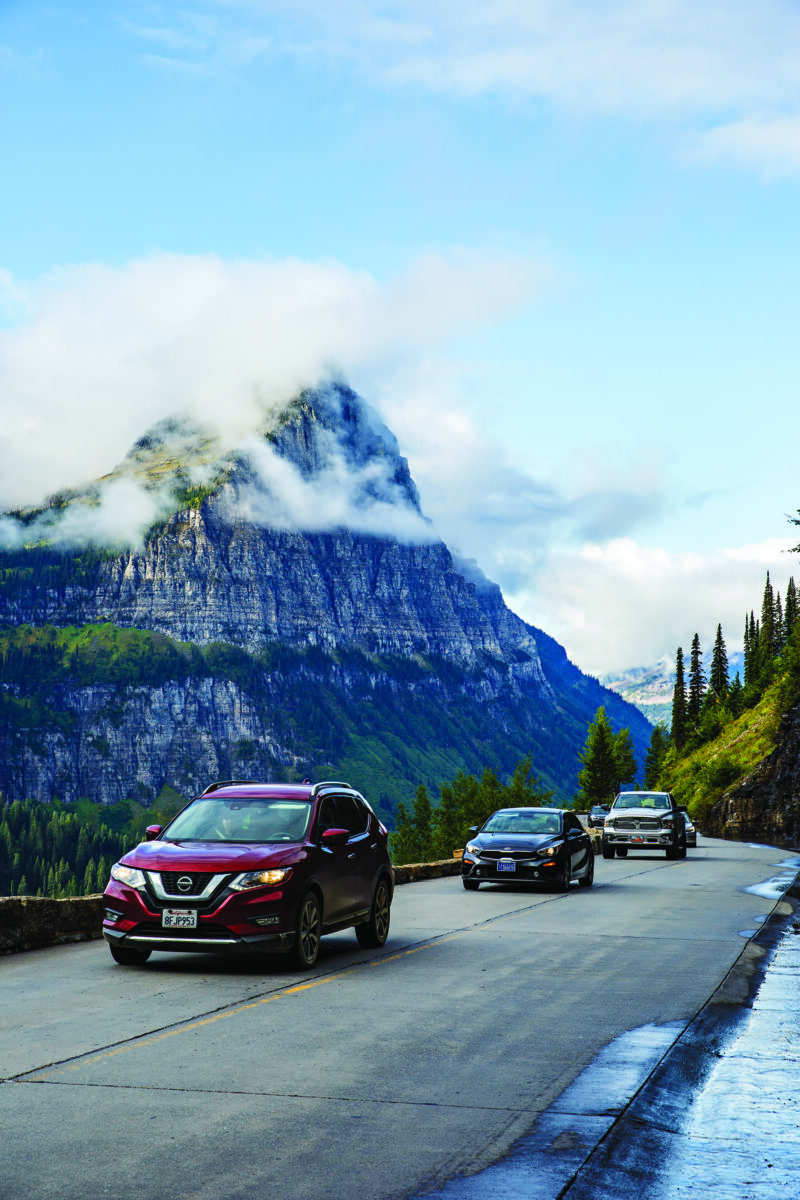
In 1908, Henry Ford introduced the Model T, one of the first mass-produced automobiles. For the first time ever, car ownership was within reach for ordinary Americans. As the second decade of the 20th century began, prices only dropped further, falling from about $900 in 1910 to $345 by 1916. Droves of Americans were drawn to the freedom of the open road — a passion that was further fueled by events like the Glidden Auto Tour.
Sponsored by automobile enthusiast Charles J. Glidden and the American Automobile Association (better known as AAA), the tour was an endurance event meant to show just what cars could do, as well as to advocate for better roads. The multi-day events often pushed the drivers and their vehicles to the brink and breakdowns were common. Among the people who took notice of the event was Louis W. Hill, president of the Great Northern Railway and the driving force of his company’s developments in Glacier Park. Hill thought the auto tour would be an ideal way to promote the newly established national park and his railroad. So, in 1913, Hill sponsored a 1,233.1-mile Glidden run from Minneapolis to East Glacier Park. The grueling drive would take nine days on a course that “ran the gamut from city street, to country road, to cow and Indian trail.” Following the cars was a Great Northern “hotel train” consisting of sleeping cars, dining cars, a traveling mechanic’s shop and a specially equipped printing plant car worth $30,000 (nearly $1 million today) that printed a newspaper, The Glacier Park Blazer, to chronicle the tour’s daily proceedings and promote its destination. The train (an “oasis in the desert” as GN’s ad men described) offered the tour’s participants a warm meal, a comfortable bed and a reminder that, while their autos were capable of crossing the great divide between civilization and the wild west, the Great Northern’s trains were still the most comfortable way to go. At least that’s the message Hill was trying to convey.
The Glacier Park Blazer, copies of which can still be found in the park archives, recorded nearly everything that happened on the journey with headlines such as “Look Out for Ruts in Road to Havre” and “Tribe that Massacred Custer Welcomes Invading Motorists.” One front-page story (“Wild Horse Attacks Auto”) told the tale of how one “rantankerous rural nag” kicked out the headlight of one of the cars. Whether or not it was one of the mares that had been employed by the Brewsters a few years earlier and then replaced with motorcoaches was left unasked. In Havre, the tour was even met by an airplane flown by a pilot identified as “Birdman Maroney.”
Nine days after they departed Minneapolis, the tour arrived at the Glacier Park Lodge for a grand celebration and the Blazer printed its final edition. But the impacts of the tour outlived the journey itself. The newspaper had been staffed by writers from across the country, including those from the New York Herald, Chicago Evening Post, and Minneapolis Daily News. Their dispatches from the tour would end up in papers across the country, perhaps planting the idea of road-tripping to the nation’s parks, a tradition that lives on even a century later.
But even if America had the desire to hit the open road, it was still lacking in a reliable highway system, especially one that connected the national parks. Three years after the Glidden tour, the National Park to Park Highway Association was founded with the goal of promoting the construction of roads, particularly one that connected a dozen of the most prominent western national parks, including Glacier, Yellowstone and Yosemite. The group also had the support of an influential government official, Stephen Mather, a Chicago industrialist who made millions in the Borax industry and who would later become the first director of the National Park Service in 1917.
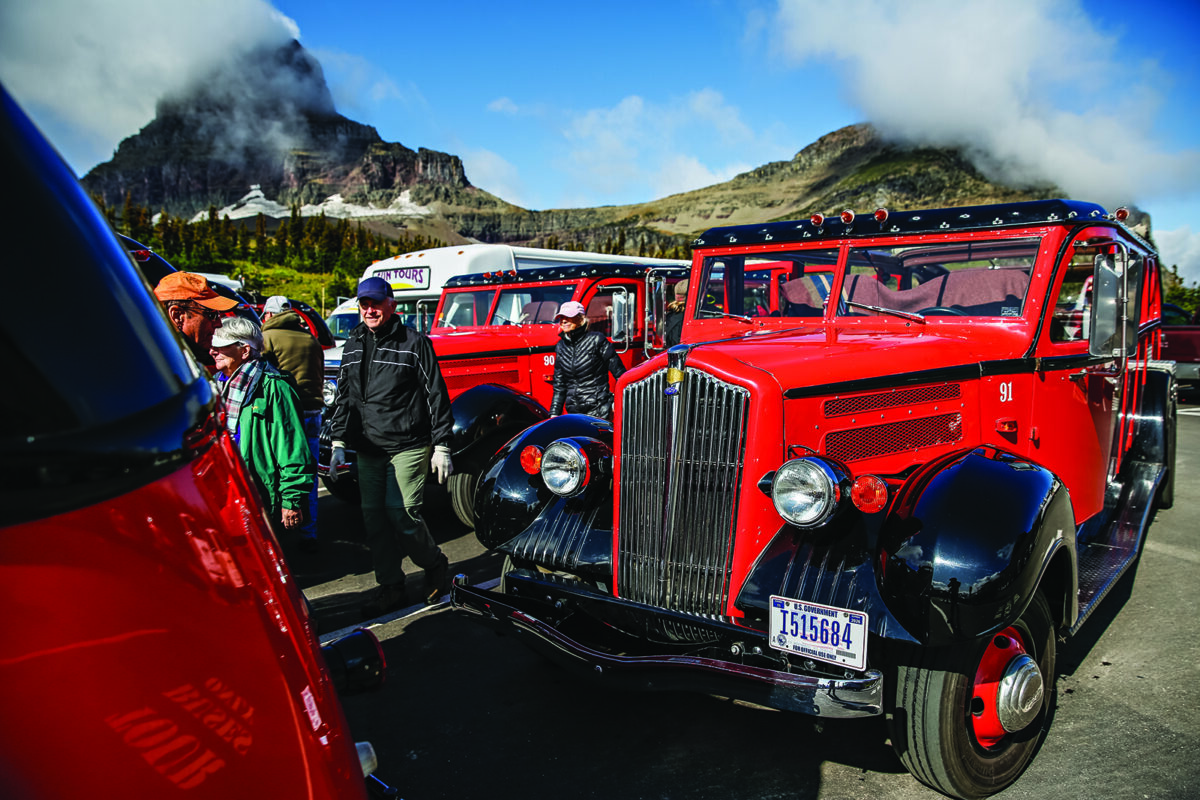
Four years after its founding, in August 1920, members of the group embarked on a multi-state tour hitting as many parks as they could, including Glacier. But while the group could drive to Glacier (by then a road had been constructed to it from Great Falls and Kalispell; no need to drive on the train tracks anymore), there was still no way to get through the park. In fact, in those days, the only way to transport an automobile across Glacier Park was to pay the Great Northern Railway $14.50 to load it on a flatcar and move it from East Glacier to West Glacier or vice versa.
But as the Roaring Twenties began, that was finally about to change. In the late 1910s, Congress appropriated $100,000 for the construction of a highway to cut across Glacier Park, initially called the “Transmountain Highway.” By 1922, the first 11 miles of the road from Apgar to the head of Lake McDonald was open to the public. But it would be another 11 years before the entire road was complete as Congress slowly dribbled out funds for the ambitious project.
The initial design of the highway had it approaching Logan Pass via a series of 15 tightly placed switchbacks on the west side. The switchbacks would help the road maintain a reasonable grade and keep costs low. But that didn’t sit well with some park officials, including landscape engineer Thomas C. Vint, who said it would end up “looking like miners had been in there.” In 1924, engineers with the Bureau of Public Roads (today known as the Federal Highway Administration) ventured to Glacier Park to map the final route over Logan Pass. Senior Highway Engineer Frank Kittredge and 32 others spent that fall hiking and climbing the proposed route, taking measurements of nearly everything they could. In some instances, they even suspended themselves off cliffs using flimsy ropes. Many of them quit before the survey was completed, but in the end, they mapped a route with wider curves that would better fit the park’s landscape.
In 1929, the western end of the road between West Glacier and Logan Pass opened, significantly increasing visitation to the park. But the simply named Transmountain Highway wasn’t the only road being built in the area. The following year, after nine years of construction, The Roosevelt Highway, better known as U.S. Highway 2, officially opened over Marias Pass. The road mostly followed the Great Northern Railway and was the first highway to cross the Continental Divide in the area.
Meanwhile, work continued on the road inside the park, as the final section between St. Mary and Logan Pass was completed in early 1933. The new road — now named the Going-to-the-Sun Highway — was opened to the public on July 15, 1933, at a celebration attended by more than 4,000 people at Logan Pass. The road had taken 12 years and $2.5 million to build. Three people were killed in the process. But that did not dampen the spirits of the people who were at Logan Pass that day.
“We may confidently declare that there is no highway which will give the sightseer, the lover of the grandeur of the Creator’s handiwork, more thrills, more genuine satisfaction deep down in his being than will a trip over this road,” said Montana Gov. Frank H. Cooney during the opening ceremony.
But the Sun Highway (it wouldn’t be called “Sun Road” until the mid-1950s when the park service rebranded it to signal that it wasn’t a means to quickly cross the divide) wasn’t the only opening that summer. In May 1933, the Great Northern, which was still the park’s primary concessionaire, hired a Columbia Falls company to build a new motel and auto cabins a mile from the Many Glacier Hotel. For years, the park service had been pushing the railway to build accommodations that appealed to budget-conscious automobile vacationers, but the GN had dragged its feet. The Great Depression didn’t help matters, as railroad president William Kenney noted.
“With the country in the throes of the worst depression in its history and no prospects for improvement … spending of any money in the park by us at this time is absolutely unjustified,” he told park officials once.
But finally, the railroad relented and opened the Swiftcurrent Motor Inn & Cabins. The facility was an immediate success and it was quickly expanded to include more cabins. Each one featured a stove, sink, cold water and electric lights. Guests could make their own food in their cabin (with their own utensils) or they could eat at the nearby cafe. Rates started at $2.25 a night. A few years later, the railroad opened up another car-centric accommodation, the Rising Sun Motor Inn just off the Sun Highway. And those weren’t the only accommodations being built. As more and more people drove to Glacier, the Park Service began to establish a series of campgrounds for folks who wanted to pitch their own tent and rough it in the wilderness next to their auto.
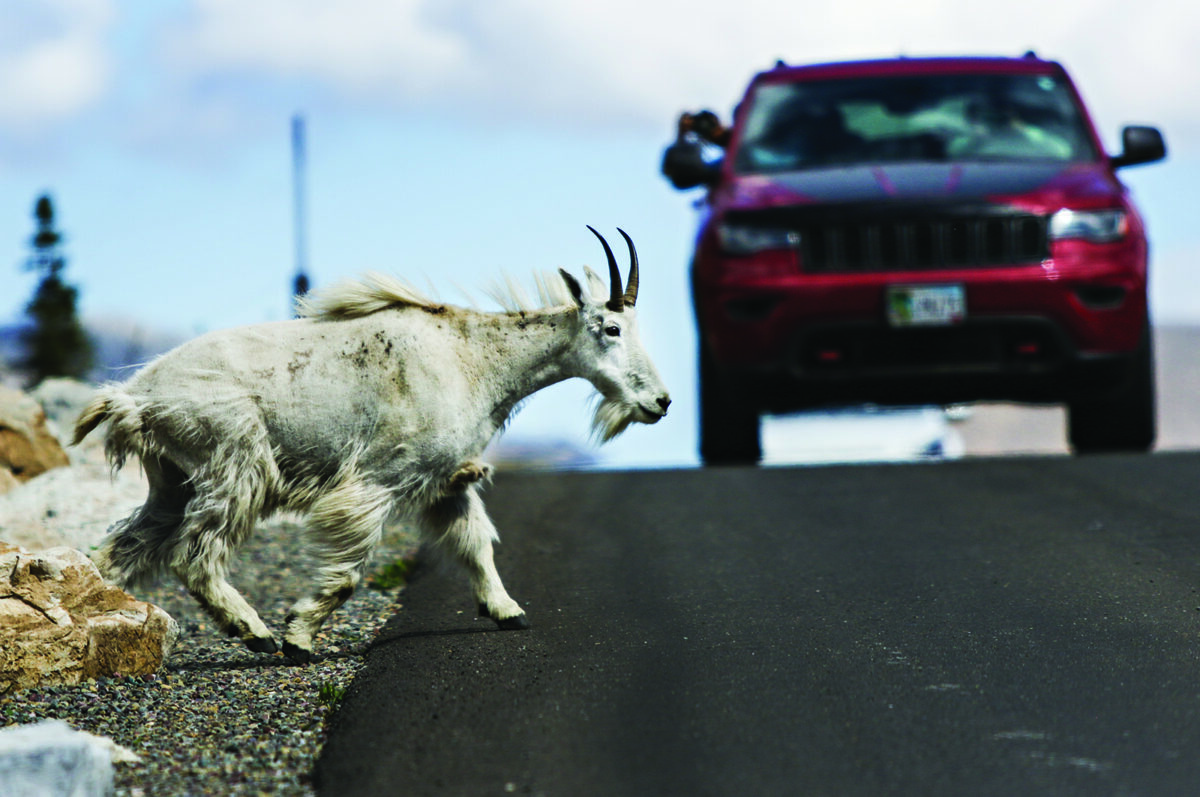
According to historian Ray Djuff, the opening of U.S. Highway 2 and the Going-to-the-Sun Highway in the early 1930s marked the end of the Great Northern’s “monopoly on travel in and around Glacier Park.” In 1920, one in every two visitors to Glacier arrived by car. But by 1930, nine people arrived by car for every one person who arrived via train. The arrival of the automobile and the roads that hosted them dramatically changed the landscape of Glacier National Park and how people experienced it.
With the construction of the Sun Highway, Glacier Park had more than 200 miles of road within its boundaries. After a blitz of road construction between 1913 and 1933, the tide began to turn on public opinion about whether Glacier needed more roads. One of the last to be built in this era would be the Chief Mountain International Highway, a cut-off route that reduced the travel time between the east side of Glacier and Waterton Lakes National Park in Canada.
“Glacier is a wilderness park,” wrote NPS Landscape Architect Ernest A. Davidson, in a letter to his superiors in the 1930s. “It should be the aim and ambition of everyone interested in the preservation of Glacier (or any wilderness park) to prevent the construction of any road, trail, or manway which is not an absolute necessity.”
A century after America grabbed its car keys and drove off into the wilderness, the challenge of managing the automobile in places like Glacier Park continues. Since 2021, with visitation hitting never-before-seen heights, the park has had to institute a vehicle reservation system. Park officials have deemed the system a success, but others have criticized it. Some have even called for the park service to put more emphasis on public transportation within the park by expanding bus services presently offered within its boundaries. If that were to happen, it would be a throwback to an era before automobiles were able to pierce the wilderness. One that was embraced by the likes of Louis W. Hill, who once said he would be “embarrassed” to drive inside a national park because he was worried about missing the scenery he had come to see in the first place.
“I have had some considerable experience in driving a car in the West,” he said at a National Park Conference held in Yellowstone in September 1911. “I carry a car with me and have one now down at the gateway. But should anyone ask me to take that car in the park I would feel very much embarrassed. I could take the car, make the trip, and be back for lunch. Now, what kind of a trip would that be?”
